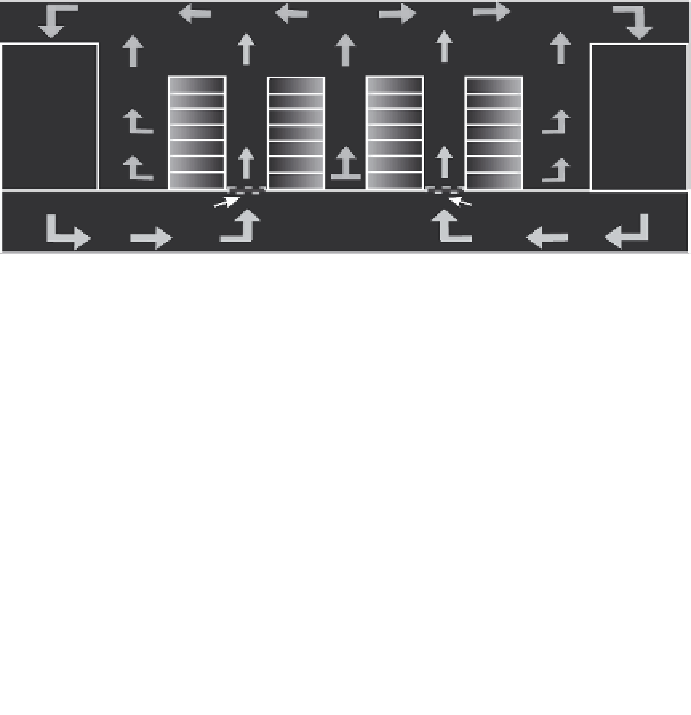Information Technology Reference
In-Depth Information
Hot/Cold air mixes
causing recirculation
Cold
Aisle
Cold
Aisle
Server
inlet
Hot
Aisle
Hot
Aisle
Hot
Aisle
CRAC
Unit
CRAC
Unit
Server
inlet
Server
outlet
Perforated tile
Perforated tile
Floor plenum
FIGURE 12.3
Diagram of an air-cooled data center room.
The efficiency of this cycle is generally measured by the coefficient of
performance (COP). The COP is a dimensionless value defined as the ratio
between the cooling energy produced by the air-conditioning units (i.e., the
amount of heat removed) and the energy consumed by the cooling units
(i.e., the amount of work to remove that heat).
Output CoolingEnergy
InputElectricalEnerg
COP
=
y
Higher values of the COP indicate a higher efficiency. The maximum theo-
retical COP for an air-conditioning system is described by Carnot's theorem
as in the next equation:
T
TT
C
COP
=
MAX
−
HC
where
T
C
is the cold temperature (i.e., the temperature of the indoor space
to be cooled), and
T
H
is the hot temperature (i.e., the outdoor temperature;
both temperatures in celsius). As the room temperature and the heat exhaust
temperature increase, approaching the outdoor temperature, the COP
increases and the cooling efficiency improves. According to this, one of the
techniques to reduce the cooling power is to increase the COP by increasing
the data room temperature.
However, as we increase room temperature, CPU temperature increases
and so does leakage power. Therefore, there is a trade-off between the reduc-
tion in cooling power and the increase in server leakage power. Previous
approaches [29] showed how two different working regions can be found
depending on the impact of ambient temperature in leakage power and
thus in the total power consumption of enterprise servers. For the lower

Search WWH ::

Custom Search